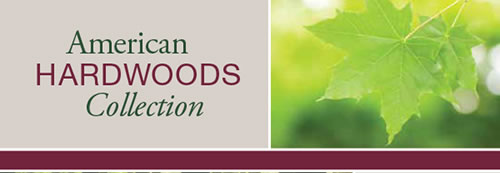The American Hardwood Export Council (AHEC) recently awarded the Outstanding Use of American Hardwood in the Middle East award to AHK International. The award was designed to highlight the growing number of projects in the region using American Hardwoods. AHK showcased the natural beauty of walnut in the new library for Zayed University in Abu Dhabi, using the American Hardwood in their design of the library’s floors, radial bookshelves, and cabinetry. At 40,000 square feet and housing 150,000 books, the new building is one of the largest university libraries in the Middle East. AHEC’s award recognized the usage of American walnut to create a conducive and inspiring ambiance for reading and learning.
“We had chosen to use American walnut across the whole library because of its…straight grained appearance and its durability, being highly resistant to heartwood decay,” said Carrie Das, design manager with AHK International. “It was also able to warm the environment and simultaneously provides a modern, classic, and comfortable feeling. The end result is a library that lives, breathes, and emanates the key beauty provided by such a rich and warm hardwood as American walnut.”
However, a recent article on Green Prophet questioned whether the use of American Hardwoods was truly “green.” Author Maurice Picow pointed out that each mature walnut tree used in the construction will take 50 years to regrow, while a softwood like pine or fir could be replenished within 20 years.
Picow’s intent is noble, but when specifying “green” floors, shelving, and cabinetry, there is more to consider than just the length of the forest rotation. As AHEC technical consultant Rupert Oliver points out, “There is no relationship whatsoever between rate of tree growth and the sustainability of harvested wood. You’ve also got to take account of the size of the forest resource – which in the case of walnut is vast. Even the slowest growing hardwoods can be managed sustainably if the area of forest is large enough and the length of time between harvests long enough.”
According to a recent report by the U.S. Department of Agriculture, approximately one million cubic meters of American walnut is harvested each year. However, the annual growth rate is 3.6 million cubic meters. Even if only 10% of the walnut harvest is suitable for high-end construction like Zayed University’s new library, it would still only take 90 seconds for each cubic meter of harvested walnut to be replaced.
Scott Bowe, an associate professor and wood products specialist in the University of Wisconsin’s Forest and Wildlife Ecology department, adds, “Short growth rotations do not make for a greener product. In fact, short rotation monoculture “crops” often require more intensive site preparation, planting, pesticides, fertilizer, thinning, and harvesting. All of these processes increase soil erosion and embodied energy and decrease water quality and biodiversity.
Further, Bowe says, “These intensive site and harvest impacts are not a part of a natural sustainably managed hardwood forest. Periodic selective harvesting of walnut, for example, in combination with natural regeneration leaves the forest intact preserving soil, water quality, and biodiversity. We spend hours in the classroom and in the field demonstrating these concepts to our students studying for a degree in forest management.”
When determining whether a hardwood or softwood is more “green”, Bowe says one should consider the diameter of the harvested log. The percentage of usable wood from a 24-inch walnut log is much higher than that of a thinner pine log. According to Bowe, it would take five pine logs (8 feet long) to equal the volume of usable wood from one walnut log (8 feet long). This translates into not just more wasted wood, but also more energy spent harvesting and processing a softwood like pine than it would take to harvest and process the same amount of usable hardwood.
As these industry experts point out, American Hardwoods truly are the green choice. Thanks to responsible forestry management practices such as selective harvesting, as well as the natural thickness (more usable wood per tree) of American Hardwoods, stunning masterpieces such as the new library at Zayed University can continue to be built for many decades to come.


